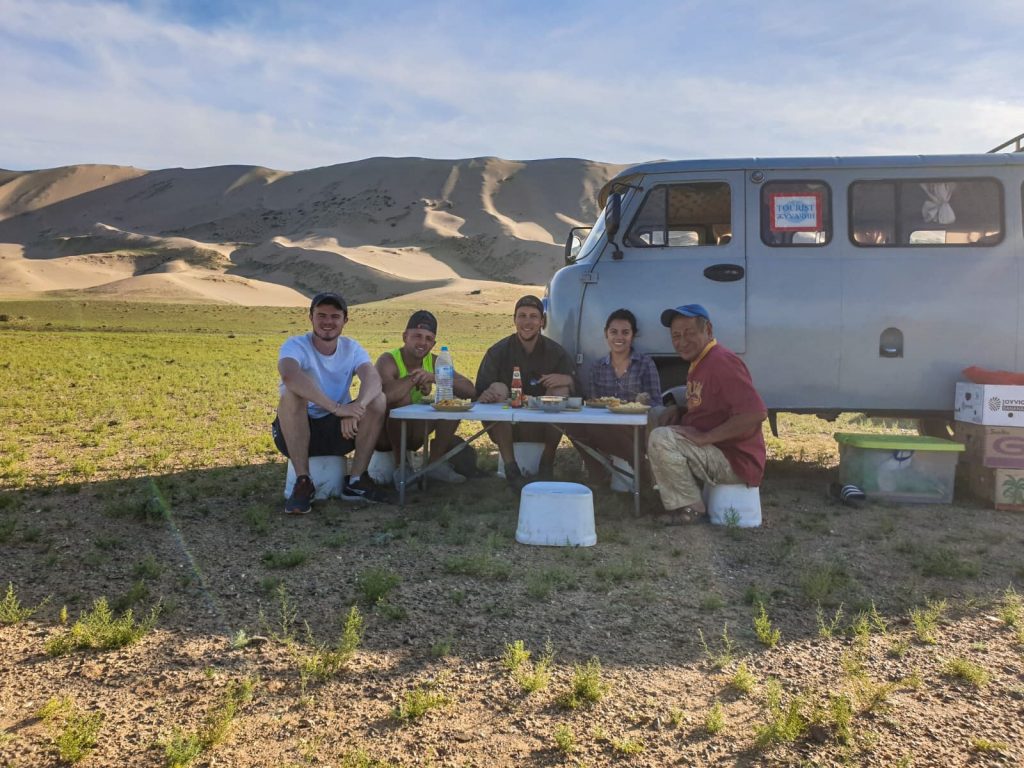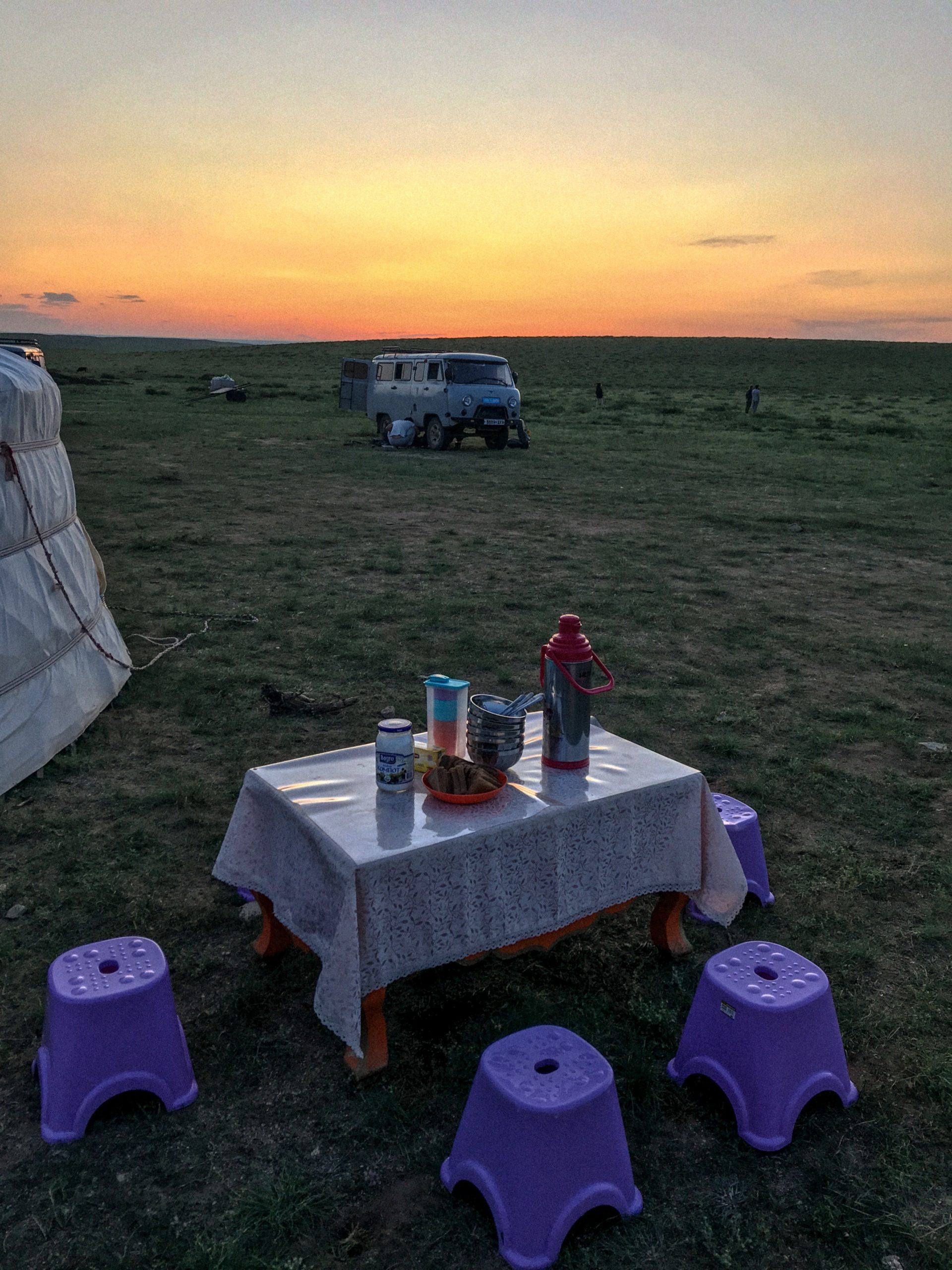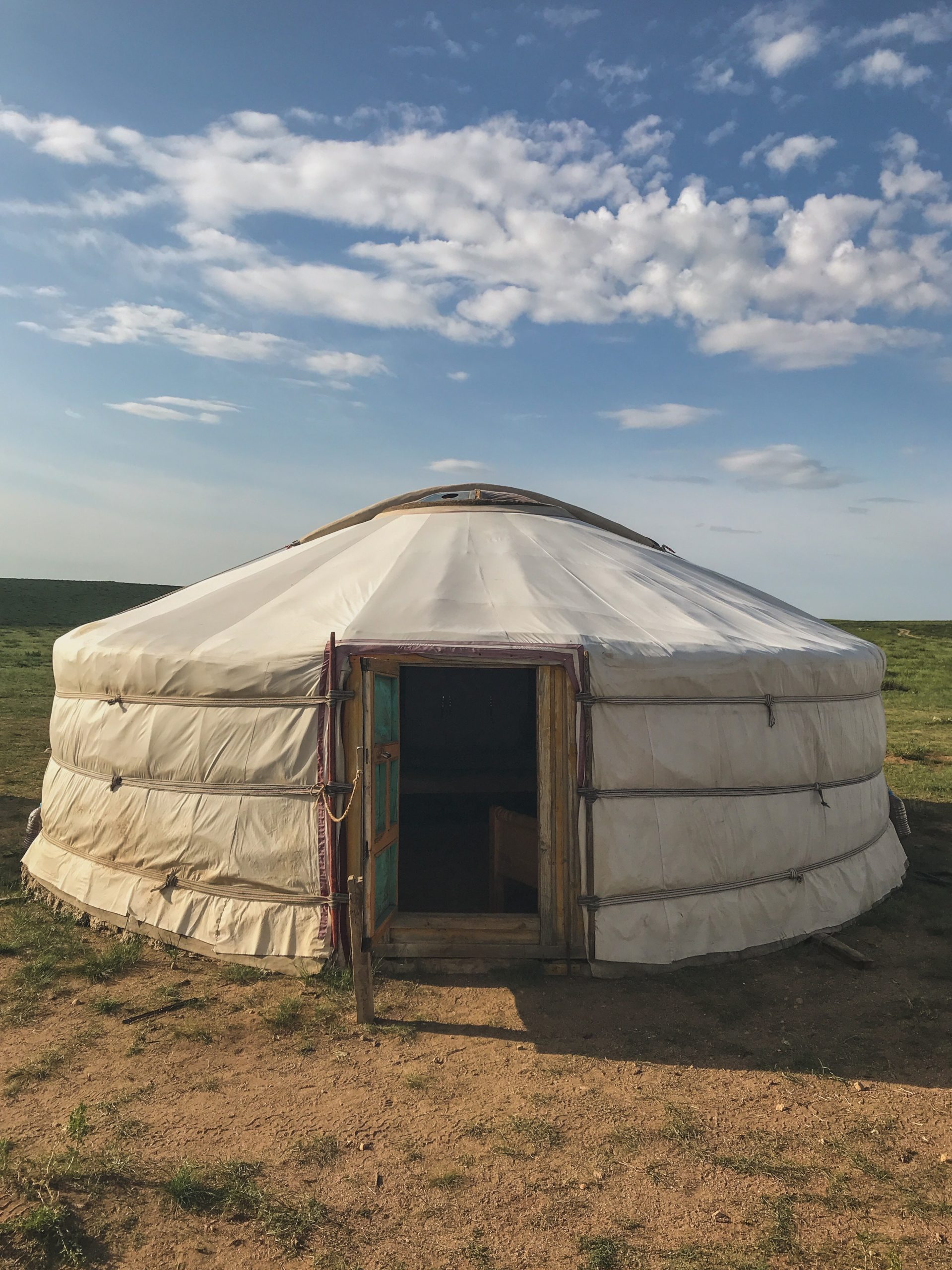An In-Depth Mongolia Travel Guide
7 Minute Read
There is something about the word “Mongolia” that seems to conjure up images of adventure. Thoughts of sweeping deserts, vast grasslands, hooded riders on camelback with an eagle clutched to their forearm, Genghis Khan, nomadic people, and smoky snow leopards prowling through frozen mountains. I’m happy to confirm that all this is true, and more. Travelling in Mongolia provides you with the opportunity for exploration and endless adventure. In this Mongolia travel guide I provide you with some tips and info for how to plan your own travel itinerary.
- How to get there
- What is it like?
- Is Mongolian culture interesting?
- How do you get around?
- What is there to do?
- What is the food like?
- Is there any wildlife?
- How much do things cost?
Mongolia featured in my Ultimate Adventure Travel Bucket List check out the article here
See also:
How to Travel in China
South Korea Travel Guide: Hiking
1. How to get there
To begin this Mongolia travel guide, you need to known how to get to this landlocked country in the middle of Asia!
In effect, Mongolia only has one major urban settlement. The capital Ulaanbaatar (or Ulan Bator in English, or Улаанбаатар in Mongol Cyrillic) is by far the largest city. The population of 1.4 million is huge in comparison to the second and third largest cities of Erdenet (98,000 people) and Darkhan (84,000 people).
This means, if you’re searching for flight paths, Ulaanbaatar is the hub for all international arrivals. From most countries a stopover is required. European legs usually stop at Istanbul or Moscow. If you’re flying west from the U.S. you will likely stopover at Hong Kong or Beijing.
Alternatively, you could do what I did and take the Trans Siberian Railway from Ulan Ude in Russia! Or if you really want an adventure drive in during the Mongol Rally!

2. What is it like?
Ulaanbaatar is surprisingly modern. Parts of the city are rather run down with old infrastructure, but other areas contain brand new shopping centres, sparkling office blocks, and multiplex cinemas. The contrast between the two can be a little overwhelming! Unfortunately, the air pollution is very high; mainly from traffic and due to the Mongol people burning tyres for fuel. I didn’t find it too bad when I was there and it’s also worth bearing in mind that Ulaanbaatar is an intermediary to your Mongolia travel adventure, so you won’t be there for long!
Once you get out of the city the landscapes are stunning. The nature is dominated by grasslands (also known as steppe), mountains, arid scrubland, deserts, and rocky outcrops. You rarely come across any substantial settlements, only dusty roads and the occasional cluster of gers.
3. Is Mongolian culture interesting?
The short answer? Yes, amazingly so.
The land that birthed the infamous Genghis Khan (Chinggis Khaan in Mongol): a ferocious leader who spearheaded one of the largest empires to ever brace this Earth. Aside from genocide and promiscuity, he was also famed for developing a unified route along the Silk Road and is now considered as the founding father of Mongolia.
Nowadays the nomadic way of life is still actively practiced across the whole country. This involves living in gers (if you are Mongolian) or yurts (if you are a Kazakh) out in the wild with you livestock (goats, camels, horses, sheep) and moving four times a year – once for each season – to new grazing grounds for your animals.

4. How do you get around?
Next in this Mongolian travel guide, are you transport options. This is important to get right as the country is large and transport is limited!
I would recommend booking a tour. I am usually sceptical of tours and often prefer to do things by myself, but there are times when going on a tour pays off. This is one of those occasions. They are such good value and significantly add to the experience – which I seldom think a tour does.
I met quite a few people who hired motorbikes and went out into the steppe for a couple of days alone. The issue with this is you have no idea where to go (maps are useless, and there are no signposts or proper roads in the wilderness). You also miss out on staying with the nomadic families and experiencing their way of life.
I stayed with Top Tour & Guesthouse, they were incredibly friendly and our guide Sako was lovely. There were only four of us passengers in the van exploring the Gobi for a week. I can’t recommend it highly enough. The trick is to book your guesthouse for Ulaanbaatar and then organise your tour through them to get the most genuine experience. Golden Gobi guesthouse was another one I heard great feedback from.
You can take internal flights if you want to get to some of the even more remote areas. There are also train lines but only the international Trans Mongolian trains which get you to Russia or China – I’m going to write a blog explaining more about this so keep posted. Domestic trains are not widely used.

5. What is there to do?
Mongolia travel primarily means adventure travel. There’s an abundance of incredible outdoor areas for you to explore.
If you’re short for time you can take a 2-3 day trip to Gorkhi Terelji national park for hiking and horse riding. If you have a week then head south to the Gobi desert for sandstone cliffs and rolling dunes.
Ten days or two weeks to spare and you should travel west, across the steppe, for mountains, lakes, and the Altai people – where eagle hunting is still an integral part of their culture.
If you have a week or more then head north to find the Dukha people, nomadic reindeer herders.

6. What is the food like?
Whenever I visit a place, I love learning about the food. To provide you with a detailed Mongolia travel guide, I believe this is essential to know!
The Mongolians are big meat-eaters, consuming nearly every part of the animal. In my tour group there was a vegetarian, and our tour guide was baffled as to why you would choose not to eat meat if it was available. The nomads don’t cultivate crops as they have to move around so much. As such, they must eat the animals they have with them.
The energy-rich fat is essential for survival during -30 degree winters when they live in their gers. The leftover skins are used to sleep on and to further insulate the walls of the gers. You will likely eat dried horse, camel, and goat; often in stews with bread or rice. If you are lucky your family will cook a Mongolian BBQ on your final night. This involves grilling a lamb on hot rocks with potatoes and carrots. It’s very greasy and calorie dense but I loved it regardless. Careful of the fermented mare’s milk they offer you, that’ll put some hairs on your chest.
7. Is there any wildlife?
Yes, a wonderful selection of animals are found in Mongolia. It takes a little while to get used to the wandering livestock everywhere. Mongolia is brimming with open space, enough for the nomads to leave their camels or goats to go off grazing for weeks on end. It’s only when they need them that they ride up to a high point to look for them, then track them down again.
Fences don’t exist on the steppe, it’s mainly just flat grassland interspersed with rocky mountains. You do see a selection of other wild animals including: deer, foxes, huge carrion birds, snakes, and other small mammals.
The coveted and elusive snow leopard prowls many of the mountain ranges in central and western Mongolia – but don’t expect to see these on an ordinary tour. They are extraordinarily rare creatures and very shy; a specialist tour is your best hope of spotting one.

8. How much do things cost?
Last on this Mongolia travel guide: money. Travel in Mongolia is fantastically cheap. Your biggest overhead expense is the flight/train to get there; after that you won’t spend much.
I went on a seven-day tour with my guesthouse to the Gobi desert. This included: a driver, a guide (who cooked us three meals a day), all water and meals, accommodation (admittedly this was camping and gers but that is part of the adventure), all our transport, and a camel ride on the dunes. The price was £45 a day ($59). Which, when you consider the cost of a beach-resort holiday in the Mediterranean, is incredibly good value.
In Ulaanbaatar things are slightly more expensive but still considerably cheap: a meal at a casual restaurant/café will only set you back £5-6. The cost of hostels in Ulaanbaatar is £5-7 a night, including breakfast.
Before You Go
Thanks for reading my Mongolia travel guide. If travel guides like this interest you, head over to my blog page to find out more!
If you’re planning a Trans Siberian trip – as I did – then your stop after Mongolia is likely to be Beijing. Check out my tips on how to travel in China for more info.
If you are new to Walk Wild you can check out the About Me page to learn about who I am and what made me want to be a travel writer.
Please comment below, let me know what you think and follow me on Twitter and Instagram to find out more.


















Matt this is super helpful! I’ll be using this if my next trip involves Mongolia. Can’t wait to read future articles.